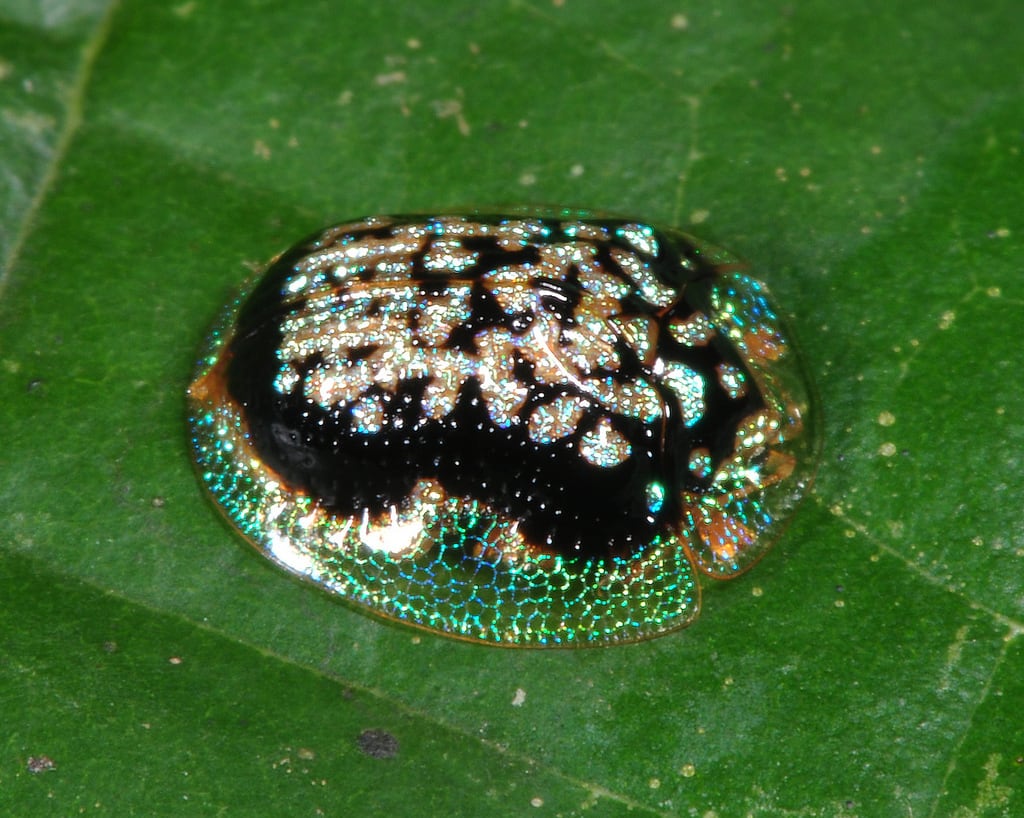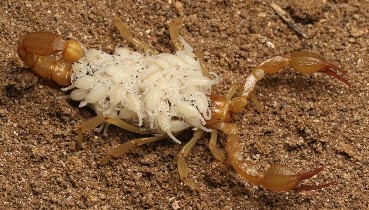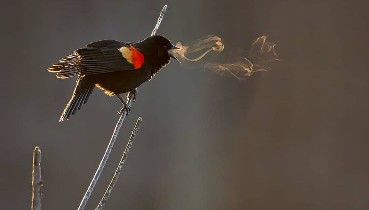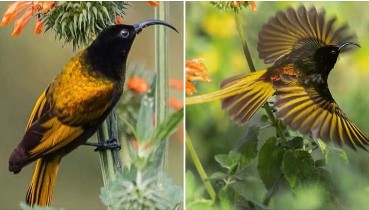

Meet: The Tortoise Beetles!
nown to the academic and entomologist communities as Cassidinae, tortoise beetles are an exceptional subfamily of leaf beetles. Almost world-wide in distribution, though they have a much greater diversity in the tropics, especially South America. Rare in temperate regions of North America and Australia, while abundant in temperate Euroasia.
Tortoise beetles get their name from the transparent carapace, which they use as a shell in cases of danger. When the tortoise beetle feels threatened, it simply withdraws its head and feet like a tortoise, sealing their flat-edged shell to a leaf. Not only that, but many of these amazing creatures can change colour at will by squeezing a film of water underneath their shells.
All this aside, some tortoise beetles of Cassidinae are one of the few arthropods who create papery ootheca to protect their eggs. And definitely one of the many few, who place their feces on top of these oothecae for extra camouflage! Meaning, tortoise beetles also use their poop as a defense mechanism. Crafty!
Tortoise beetles eat predominantly leaves and plant matter, but if you're not living in a subtropical region in South America these beauties can't be a potential pest threat for your garden. However, few of the species that are found around Europe and North America rarely reach the size of a "call the exterminators" type of pest infestation.
So here are some of the most beautiful tortoise beetles out there:







Recommended Videos
 Californian Teens Discover Two New Scorpion Species and Are Not Planning to Stop There164 views
Californian Teens Discover Two New Scorpion Species and Are Not Planning to Stop There164 views The bearded reedling (Panurus biarmicus) is a small, sexually dimorphic reed-bed passerine bird5683 views
The bearded reedling (Panurus biarmicus) is a small, sexually dimorphic reed-bed passerine bird5683 views-
Advertisements
 This Waterbird Has Unique Feet That Look Like Feathers, And The Photos Are Awesome!214 views
This Waterbird Has Unique Feet That Look Like Feathers, And The Photos Are Awesome!214 views Perfectly Timed Photo Shows Singing Blackbird Creating Vortex Rings with His Breath589 views
Perfectly Timed Photo Shows Singing Blackbird Creating Vortex Rings with His Breath589 views At 39 kg, The World’s Heaviest Radish Is A Record-Bгeаkіпɡ Achievement197 views
At 39 kg, The World’s Heaviest Radish Is A Record-Bгeаkіпɡ Achievement197 views Cherry Blossoms Have Just Bloomed In This Japanese Town, And The Photos Are Magical4404 views
Cherry Blossoms Have Just Bloomed In This Japanese Town, And The Photos Are Magical4404 views The Pink See-Through Fantasia Is a Dweller of the Deep Sea and You Can See Its Organs at Work209 views
The Pink See-Through Fantasia Is a Dweller of the Deep Sea and You Can See Its Organs at Work209 views Unique Trees: 10+ Photos Of Incredibly Weird Trees From Around The World81 views
Unique Trees: 10+ Photos Of Incredibly Weird Trees From Around The World81 views



